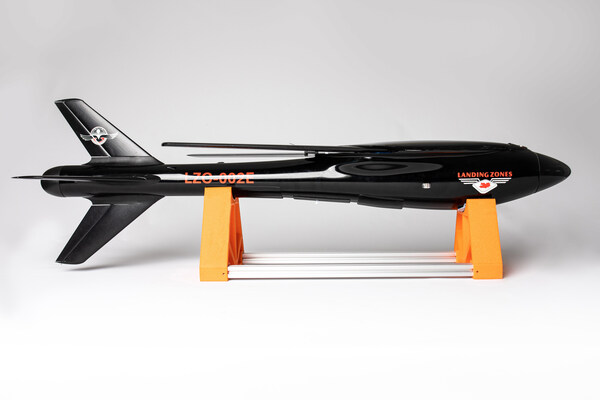Biodegradable Weather Balloons and Drones Team Up to Protect the Planet

@ CNW Group/Landing Zones Canada Inc.
Every day since 1942, balloons with environmental measurement devices have been launched worldwide to collect important weather data for safe air transportation. The instruments, called radiosondes, are housed in plastic boxes suspended by a tether from the balloon, which eventually pops, contributing to global pollution. This happens approximately 600,000 times a year at weather stations around the world. Canada is home to 31 of these stations, contributing to 22,000 balloons and their electronic devices polluting the country. Spence Fraser was determined to find a way to collect this vital weather data with less environmental impact.
On August 15, 2022, he officially founded Landing Zones Canada Inc., headquartered in Medicine Hat, Alberta. Serving all of Canada, Landing Zones develops green and clean technology for unmanned aerial systems. With drone technology, Spence was confident that an alternative to traditional radiosondes was possible. With a team of dedicated engineers, Landing Zones introduced the GITPO Radiosonde Remotely Piloted Aerial System (RPAS). “Our GITPO Radiosonde Remotely Piloted Aerial System (RPAS) is a complete solution to replace legacy, single-use radiosondes that currently litter our forests, fields, mountains, lakes, rivers, and oceans,” the company’s website states. “By eliminating the need for single-use radiosondes, we mitigate the impact of their disposal on delicate ecosystems.”
Like traditional radiosondes, the RPAS is launched from a biodegradable weather balloon into the stratosphere to collect pertinent data. The balloon deployment allows the drone to conserve energy while operating on a light battery, with enough time to complete mission objectives. Once in position, the drone detaches from the balloon to collect and transmit data to a weather station. When data collection is complete, the drone returns to its originating station or travels to a new one. “This means they’re a nearly zero-waste solution that can be recovered and used over, and over, and over again,” Landing Zones explains.
Getting the RPAS up and running was a collaborative effort for Landing Zones, something Spence says is vital for the longevity of such endeavors. The company partnered with Lockheed Martin Canada CDL Systems to utilize VCSi, their advanced and proven ground software control station program. Joining the collaboration was also Canada’s Shearwater Aerospace, with their Smart Flight software, an AI-driven system that utilizes weather patterns for flight optimization. Landing Zones also proudly partners with indigenous Canadian peoples to provide job opportunities throughout the nation.
With the success of the RPAS system, Landing Zones recently announced their latest project: the Eagle Advanced Payload Delivery System (APDS). Like the RPAS system, the Eagle APDS is launched from a balloon. However, rather than being used to collect environmental data, the Eagle is the world’s first balloon-launched, stealth military-grade glider drone. The rugged drone has a variable wing profile that allows it to transition from loitering to supersonic speeds in stratospheric or low-altitude positions. It has full autonomous operation capabilities, which can be easily and securely switched to manual operations.
In a mock-up video about the Eagle APDS system, Landing Zones reveals one possible way the drone can be utilized when engaging a target at sea. Four drones are suspended vertically by a tether on a balloon and launched from a team safely on the ground. When the balloon has reached the desired aerial position, the drones detach from the tether. Two of the drones fly in one direction toward the target with active radio signals on, acting as decoys. The other two drones, without an active radio signal, are positioned high above the target. As the target concentrates on eliminating the first two drones, the stealth drones drop into a 90-degree dive straight for the target. At the same time, several balloons transporting the Eagle APDS system are launched for heightened advantage.
It is a system that Spence proudly believes can revolutionize military operations around the world, much like Landing Zones has revolutionized weather data collection. With its innovative unmanned systems, Landing Zones Canada is leading the way in creating environmentally sustainable solutions for both weather data collection and military operations. Spence Fraser’s vision to reduce the ecological footprint of traditional technologies while advancing drone capabilities is a testament to how thoughtful innovation can shape a better, cleaner future.
|